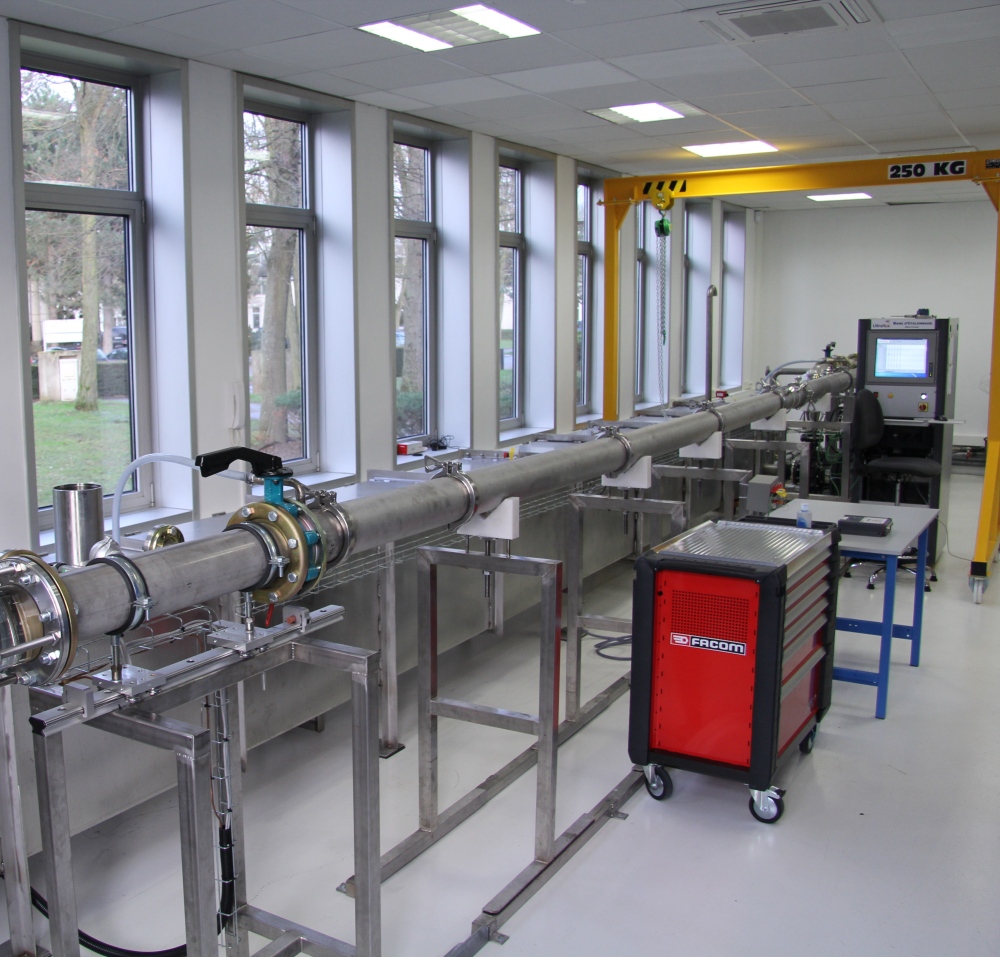Research laboratory
Ultraflux places great importance on innovation. This is why a third of our employees are doctors or engineers. Furthermore, we have put in place an ambitious innovation policy, which has resulted in significant investment in Research and Development
Our newest test laboratory, situated in Éragny-sur-Oise (95) in France, boasts the most up-to-date equipment, which will enable us to develop the products of the future
We have reliable and precise measuring equipment, including:
used to:
- analyse the behaviour of ultrasound in fluids and through solid interfaces (intrusive and clamp-on probes).
- experiment in order to validate simulations created using our software.
- experiment in order to validate our prototype probes.
used to:
- simulate the propagation of ultrasound waves through multiple moving solid and fluid interfaces.
used to:
- create several flow rate scenarios.
- improve measurement precision.
- respond to ever more demanding applications.
- analyse the performance of our flow meters, particularly in the presence of hydraulic disturbances.
- experiment in order to validate simulations created using our software.
- experiment in order to validate our prototype flow meters.
used to:
- simulate flow velocity fields on the basis of the pipework geometry (upstream and/or downstream disturbances).
used to:
- carry out dimensional checks on spool pieces.
- determine the place of the probes in the context of studies.
used to:
- provide increased stability, and therefore increased precision, for dimensional checks.
used to:
- perform cycles at temperature to validate the performance of our devices (converters and probes).
used to:
- test applications and validate “high temperature” performances.

